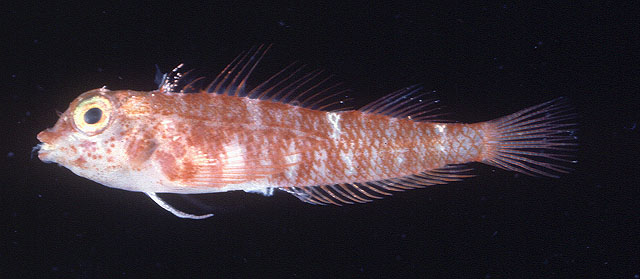| Tripterygiidae (Triplefin blennies), subfamily: Tripterygiinae |
| 3.2 cm SL (male/unsexed); 2.91 cm SL (female) |
|
demersal; marine; depth range 0 - 15 m, non-migratory |
| Western Pacific. |
|
Dorsal spines (total): 12-15; Dorsal soft rays (total): 8-10; Anal spines: 1-1; Anal soft rays: 16-19. 9-12 spines in the second dorsal fin, 8-10 rays in the third dorsal fin, 17-20 anal fin rays, 32-37 + 1 lateral scale rows, 13-19 + 17-22 lateral line scales, two median mandibular pores, a black band on the caudal peduncle, about 9 basal dark spots on the female's anal fin, and a overall blackish coloration of the male. |
| Adults inhabit rock and coral reefs (Ref. 90102), from the surface to 15 m, including intertidal pools (Ref. 13227). Eggs are hemispherical and covered with numerous sticky threads that anchor them in the algae on the nesting sites (Ref. 240). Larvae are planktonic which occur primarily in shallow, nearshore waters (Ref. 94114). |
|
Least Concern (LC); Date assessed: 03 May 2010 Ref. (130435)
|
| harmless |
Source and more info: www.fishbase.org. For personal, classroom, and other internal use only. Not for publication.

